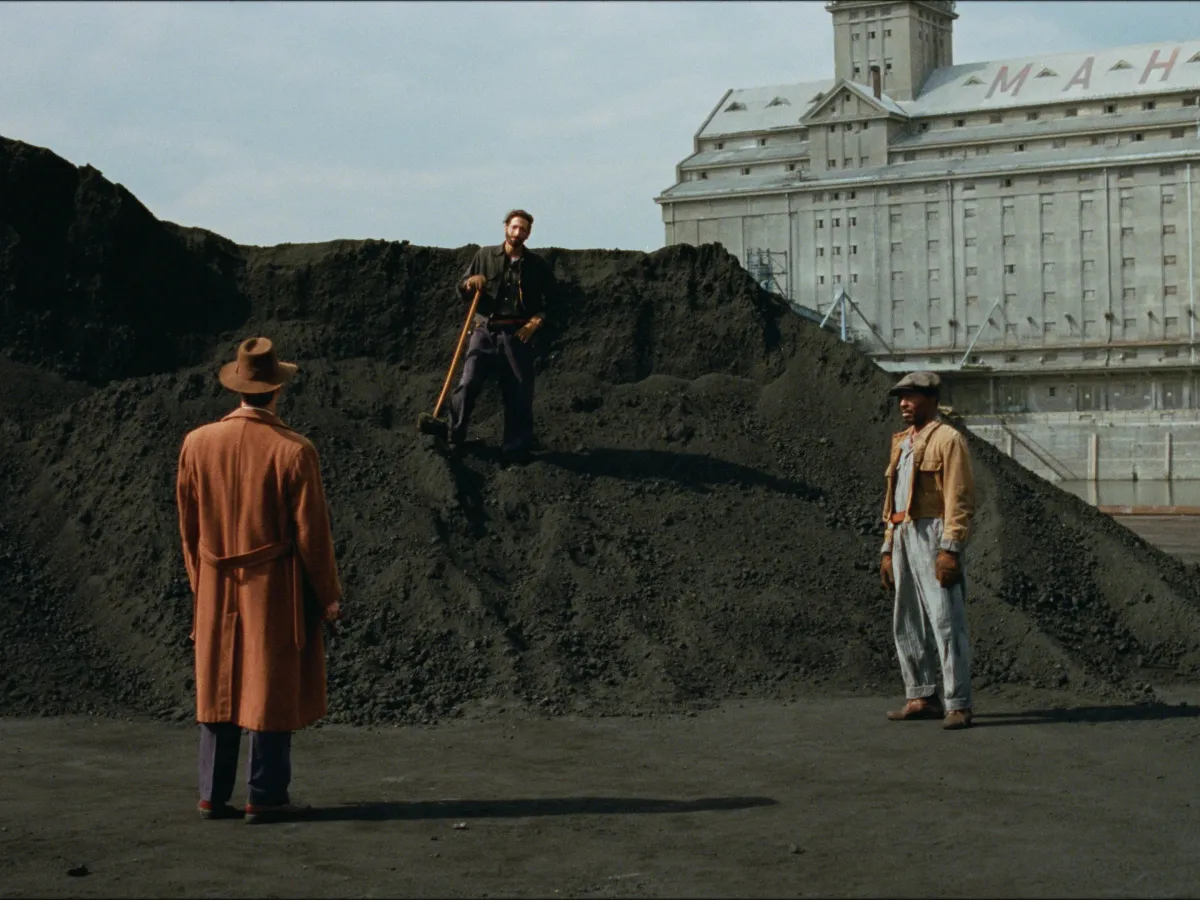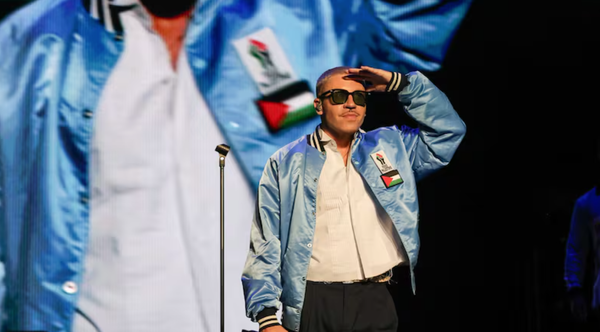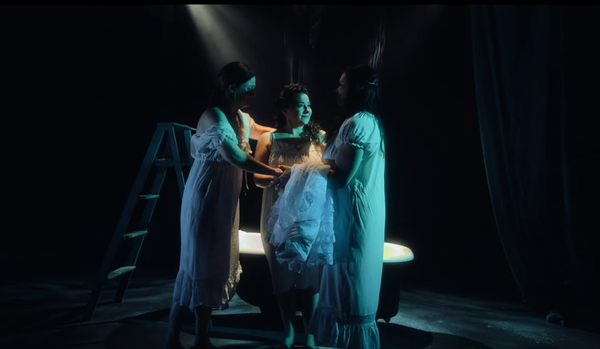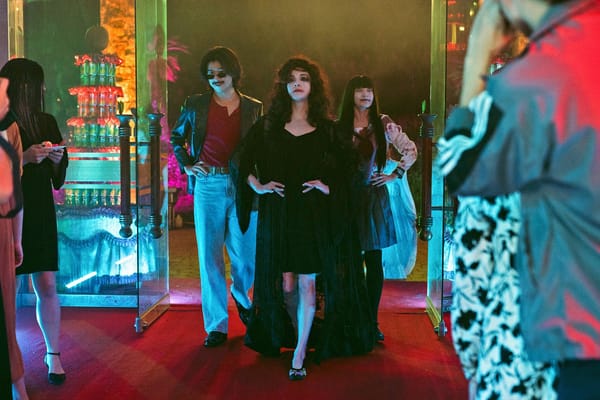All the Way to Being Brutal

Brady Corbet’s postwar epic The Brutalist follows László Toth, a Jewish architect seeking refuge in post-war America, as he embarks on a building project for a mysterious Philadelphia benefactor and is reunited with his wife and niece. It’s a sensory-overload period piece, shot on the once-defunct Vistavision format, accompanied by a grinding, brassy score by Daniel Blumberg. It’s an Oscar darling, as Adrien Brody’s performance as Toth garners acclaim, nearly guaranteeing his second Best Actor award. But The Brutalist has a glaring problem. No one knows what to do with the ending of the film.
Be warned that we are knee-deep in spoilers for The Brutalist from this point forward.
The film’s epilogue, given the chapter title “The First Architecture Biennale”, is set in Venice in 1980. A middle-aged woman, who we come to learn is Toth’s niece Zsófia (played in the epilogue by French-Greek actress Ariane Labed), gives a speech on his work for a cosmopolitan crowd, including an elderly László. In her speech, Zsófia reflects on the parallels between her uncle’s projects and the concentration camps their family were forced as the Third Reich expanded into Hungary. As she reflects on her relationship with her uncle, she shares with the crowd an a favorite aphorism of Toth’s, told to her as sage advice; "No matter what the others try and sell you, it is the destination, not the journey.”
Many, myself included, find the ending rushed and baffling. As “One For You, One For Me” by La Bionda blared over the end credits, I thought, “there’s no way that I just sat through three and a half hours of architecture porn only to be told that the final product, not the process, is what really matters.” How can this film, devoted to the creative act, shot on film using an arcane process, that features a shot of water being poured over marble, unveiling its true figure, truly believe the sentiment it closes with?
I realized that the way for me to still enjoy The Brutalist given the epilogue, is to read the ending cynically. One of the keys to this cynical reading is by noting the film’s shift into artificiality in the final chapter. Blumberg’s score, grinding and percussive, transforms into a sparkly, synth-laden reinterpretation of itself (performed by Depeche Mode’s Vince Clarke). The saturated, naturally-lit Vistavision gives way to grainy, flat videotape and, eventually, slick digital cinematography. While it’s all period-accurate, it also feels as if Corbet and his team are drawing a line between the world of Toth’s constructions, with the pain and effort that they engendered, and the comparatively bloodless world of Zsófia's analysis in the 1980s. If the finale and Zsófia’s speech feel haphazardly tacked on to the film, it can be argued that it is intentionally out of place and artificial.
It’s also important to think about who is speaking at the Biennale. Notably, Zsófia has been silent for the majority of the film, rendered mute by the horrors of war and internment that she faced at Dachau. As played by Corbet favorite Raffey Cassidy, young Zsófia is a cipher, a secondary protagonist worthy of the postwar literature that Corbet pegs as influences on the film. She’s a young woman to whom Things Happen To, but because of her muteness we can only assume that she suffers nobly. We don’t hear her speak until she moves to New York with László and Erszébet, passionately defending her move to Jerusalem over dinner to her incredulous aunt and uncle. To be fair, it’s understood now that your average Jewish refugee in the US was not fully aware of the scope of the Nakba that quite literally paved the way for their settlement in Palestine in the early 50s. Her new husband, Binyamin, has family there, and she wants to be sure that her child, who will be Jewish, is safe.
Zsófia’s Zionist tendencies, even if well-intentioned, illuminate a crucial element of her worldview. Zsófia insists on a reading of László's career that boils his art down to his Holocaust trauma. This calls to mind the Israeli cultural apparatus’ insistence on claiming all Jewish artistic and cultural achievement as their own. Regardless of the person’s relationship with Israel, if they are Jewish, their success is another brick in the ideological fortress that is Zionism for Israelis.
It’s also noteworthy that we don’t hear anything in the epilogue from the older László, who watches the speech from his wheelchair, showing no emotion. While Zsofia remarks on the fact that she speaks for him now as he and Erszébet spoke for her when she was mute, there is something mildly sinister about the fact that László can not speak for himself at the Biennale. It is narratively frustrating that László is not allowed the last word about his life and career as we have just watched him insist on his vision, on his own terms, for the last three and a half hours.
So what are Brady Corbet and co-writer Mona Fastvold going for here? In a Q&A at the Toronto Internation Film Festival, Corbet gives an academic non-answer to a question about László's feelings toward Jewishness and Israel. The closest he comes to any sort of analysis of the film’s commentary on the fraught relationship between Judaism and Zionism is a comment that he directed Brody to look as bored as possible in scenes when László is at shul. In Corbet’s eyes, Judaism isn’t all that important to László, as is anything that isn’t architecture. He also subtly equates Judaism and Zionism here, a truly careless misstep.
It’s telling that the only other time that we hear about Israel in The Brutalist, it is in the form of a news bulletin about the end of British control of Palestine playing over a montage of László and his team welding steel and constructing furniture for his clients. Corbet juxtaposes the work that László does in America against the news of a Jewish state in the Middle East, ostensibly creating an opposition between these two modes of Jewish identity. In diasporic Jewish spaces, the term doikay’t (Yiddish for “hereness”) is often presented as an ideological counterweight to Zionism. László is literally creates work “here”, i.e. in America, as political forces “create” a state in Palestine. Through this framework, László's work should be seen as just as much an expression of his Jewishness as devotion to a state, if not more so. But Zsófia's speech insists that his work must be viewed through the perspective of his later residence in Israel, something he only does upon Erszébet's request.
Zsófia’s claim that “it’s the journey, not the destination”, is kind of a perfect distillation of the Zionist narrative, echoing the reason that Zionists all over the political spectrum have no qualms with the collective punishment of Palestinians in the name of the Jewish people. To them, Jewishness is not about the years of suffering and toil that we suffered as a religious and ethnic underclass. Jewishness rebooted in 1948 when the destination of Israel materialized.
Naomi Klein wrote on Bluesky that “politically, [The Brutalist is] like Atlas Shrugged and Exodus had a baby.” I’m not going to say that Naomi Klein is wrong, she’s much smarter than me. But I do think that there’s some value in reading that the film’s ending, with its jarring shift in style and message, is intended to contradict the rest of the film. Perhaps the film does not actually believe that Zsófia's is the proper reading of Toth’s career. The problem, however, is that Corbet is not as politically sophisticated of a filmmaker as he thinks he is. If he were, the ending of The Brutalist would more definitively offer a critique of co-opting art to serve wayward political ends. If he set out to create a clever and cutting ending to his monument to process, he accidentally deflated the film’s whole premise.
That’s not to say that The Brutalist is bad or boring or even ethnonationalist apologia. It’s a beautiful, forceful film that unfortunately gets in its own way. To love art is to accept that sometimes it ends up missing the mark through unforced errors. And that itself is a testament to the power of the journey, of process, and not the destination, the final product.




